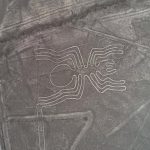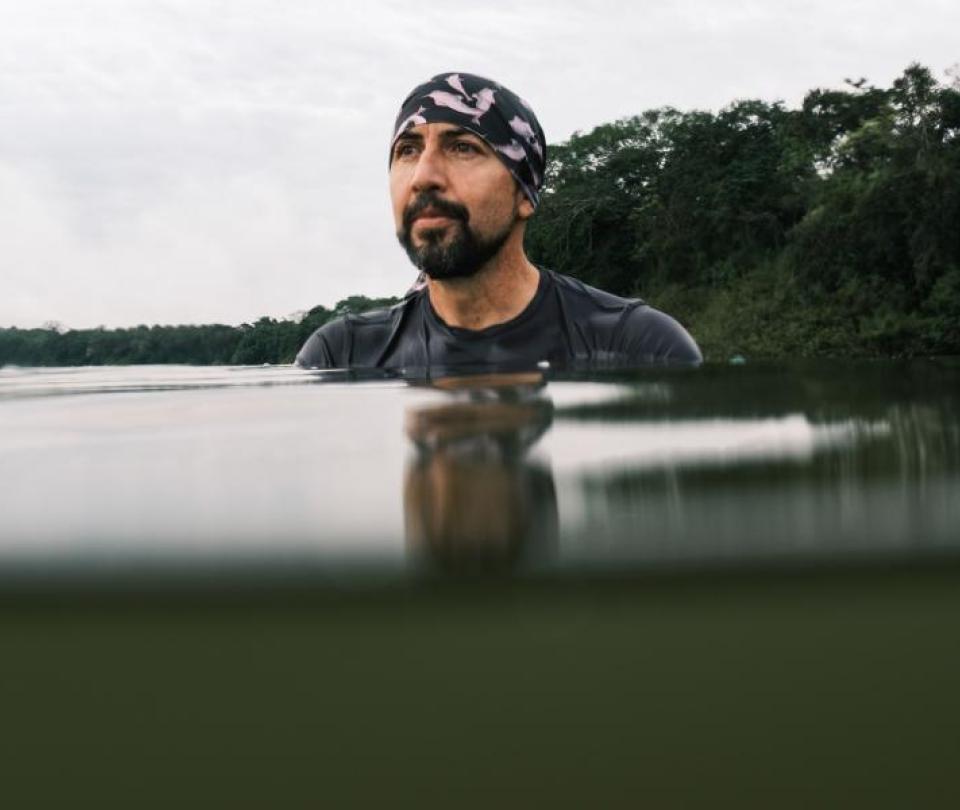The tribes of the Amazon call it Omacha, an appellation that hides a powerful meaning.
Fernando Trujillo was born in Bogotá 56 years ago, but he has spent 37 of them in the Amazon studying and fighting to conserve the local fauna and, especially, the pink dolphins.
In that time he has traveled more than 80,000 kilometers in rivers and has lived with Ticuna, Cocama and Yagua indigenous people, who have accepted him as another inhabitant of the Amazon rainforest, the largest on the planet with 5.5 million square kilometers.
He created the Omacha Foundation in 1991 to defend the biodiversity of the Amazon against the constant threats that hang over it, from deforestation and illegal mining to climate change.
And this week he became the first Latino named National Geographic Explorer of the Year, a recognition given to those who identify and solve critical problems on our planet and inspire others to act.
“When they told me about the appointment, I didn’t believe it. Many of the conservation icons that one has are in National Geographic, so it is an honor, a great responsibility,” he explains to BBC Mundo in an interview.
We tell you who this Colombian is who dedicates his life to pink dolphins.
The stories of his grandfather, who frequently traveled to the Orinoquía, and the documentaries of the Spanish naturalist Félix Rodríguez de la Fuente instilled in Trujillo an unusual passion for nature since his childhood.
“I only applied to one university, which was the only one that had marine biology. Everyone told me, ‘but how do you take the risk that way? What if they don’t admit you?’. But I did it and I studied marine biology,” remember.
During his university education, an experience would mark his future.
A scientific expedition took several Amazon dolphins to Bogotá to carry out studies on their hearts, and the young biologist had his first contact with these fascinating animals.
“They died shortly after, but I ended up doing an internship at an aquarium in the Colombian Caribbean,” he says.
The real turning point in Trujillo’s life was his first trip to the Amazon: at 19 years old and without financial resources, he ventured with two companions on a cargo plane heading to the jungle in Leticia, in southern Colombia in the border with Brazil and Peru, to see the dolphins in their natural habitat.
“I was spellbound and decided at that moment to put all my energy into learning and doing something,” he says.
Trujillo claims to be the first Colombian to complete a thesis on dolphins, which marked the beginning of a career that would lead him to be a pioneer in the research and conservation of aquatic mammals in the region.
When he arrived in the Amazon in the late 1980s, he found an unfamiliar and, in some cases, hostile environment.
“I had many fears, many fears… I started talking to members of the tribes about dolphins, and they didn’t really understand why we came from so far away to study dolphins,” recalls the biologist.
Initially, the indigenous people were reluctant to collaborate with him: “we don’t like biologists or anthropologists; you come, stay for two weeks, get the information from us, never come back and become famous,” they told him.
Far from deterring him, this pushed him to stay to demonstrate his commitment to the community.
“I decided to make a life plan there; I began to spend longer and longer periods of time in this small town,” he says.
This committed approach and his willingness to integrate with the locals helped him gain the trust and respect of the indigenous people.
Trujillo assimilated his ancestral wisdom: “being with people gives you knowledge of what their needs are. That was another university for me,” he comments.
It was his constant presence and dedication to dolphin conservation that earned him the nickname Omacha, given to him by the Ticuna indigenous people.
“They saw that I was so obsessed with dolphins that they started calling me Omacha, Omacha, and they laughed; I asked them what Omacha was and they didn’t answer me; until one day they told me that Omacha is the dolphin that transforms into a person,” Explain.
“We think that you are a dolphin that became people and is wanting to protect all your brothers. You must be a dolphin,” he claims they told him.
The scientist proudly adopted the name that he would later use for his foundation: “I thought it was a very nice designation; they call my eldest daughter Omachak, which is the baby dolphin in Ticuna,” he asserts.
The Amazon pink dolphins are one of the most emblematic species in the region.
These aquatic mammals, also called botos, are distinguished by their characteristic pink color that varies in intensity depending on their age and health.
Pink dolphins inhabit the rivers and lakes of the Amazon basin, navigating through flooded forests during the rainy season.
“They are very curious. You go in a canoe through the middle of the jungle and suddenly they arrive and start pushing the canoe, they release bubbles next to you and, if you get into the water, they start passing you by,” he describes.
And he remembers an anecdote that occurred in an Amazonian lagoon when, during a photo session, he lost a bandana that he valued very much.
“When I went under, I dropped it and I came out very sad. I said, ‘ah, I lost this bandana’. Suddenly, I felt someone pushing me, and a dolphin took it on his fin and gave it back to me,” he says.
In addition to studying them, the Omacha team carries out evaluations of the dolphins’ health, with controlled captures to perform ultrasounds, take blood samples and measure parameters.
And, regardless of their ecological importance, pink dolphins have deep cultural significance for indigenous communities in the Amazon.
“They are sacred beings for the indigenous people. They consider that dolphins have submerged cities. The Ticunas speak of a very large red dolphin that is on another spiritual level and helps transfer the souls of dead human beings to another world,” he says.
Omacha’s work in the Amazon has not been free of risks and difficult situations.
The first dangerous encounter he remembers occurred when he was only 19 years old.
“Some armed drug traffickers came out to me who had a cocaine laboratory there and I said ‘no, I’m here.’ They told me, ‘Who are you?’. I answered that I was looking for dolphin bones and they almost shot me there,” he says. Trujillo.
“I told them I was a biologist, they asked me if I knew anything about chemistry and, when I answered yes, they offered me to work with them. I told them thank you very much, but no,” he laughs.
He explains that the Amazon is a complex region, with multiple armed actors including guerrillas, drug traffickers and paramilitary groups that he occasionally encountered on his expeditions.
However, his integration into the jungle and his close relationship with local communities saved him more than once.
“We have had encounters with the guerrilla, with many actors. The armed actor approaches you, intimidates you to find out who you are, and in the end he tells you, ‘ah, the one with the dolphins, ok, ready, no problem, keep doing his journey,'” he explains.
He adds that “working closely with communities protects you in some way, because they say: ‘these people are good people, they are doing things for us, they are helping us.'”
The Omacha organization founded by Trujillo, which protects Amazon pink dolphins and other aquatic mammals, has completed numerous conservation and sustainability projects in the Amazon, Caribbean and Orinoco region.
Through Omacha, Trujillo and his team have managed to establish policies and agreements that protect river ecosystems and improve the living conditions of indigenous communities.
The appointment as National Geographic Explorer of the Year is the culmination of a series of recognitions that the biologist has obtained in his almost four decades of work, including the Whitley Conservation Award that he was awarded in 2007 in the United Kingdom.
Omacha believes, however, that much remains to be done to save the Amazon and warns that it is in serious danger due to deforestation, extreme climate phenomena such as drought, illegal mining – especially gold – and the presence of armed groups.
To conclude the interview, we asked him what his dream is.
“My dream is that there really is coordinated action among all governments, of responsibility, to stop this, so that we do not lose the Amazon,” he responds.
Click here to read more stories from BBC News Mundo.
You can also follow us on YouTube, Instagram, TikTok, X, Facebook and our new WhatsApp channel, where you will find breaking news and our best content.
And remember that you can receive notifications in our app. Download the latest version and activate them.













Add Comment